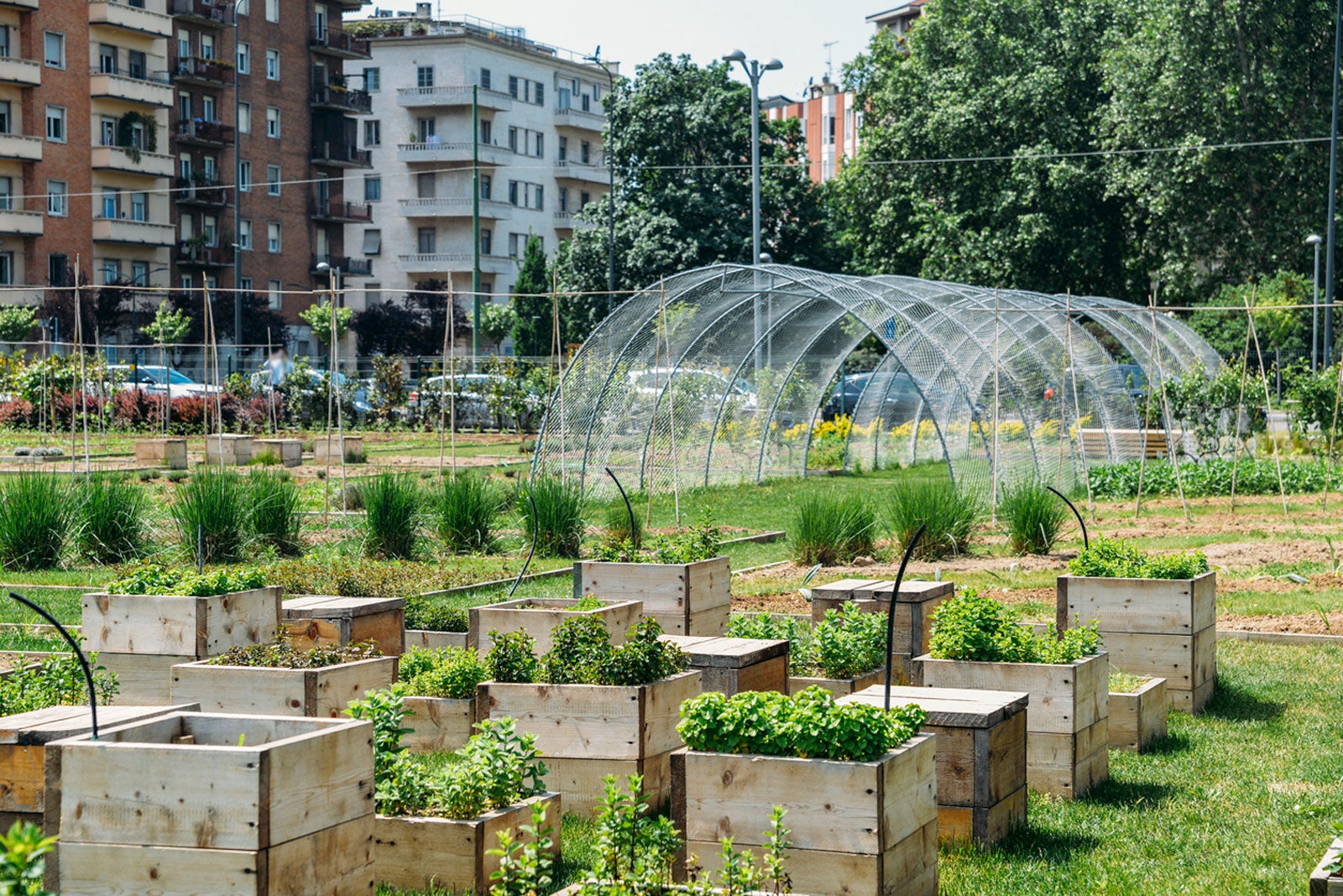Urban Farming Facts – Information About Agriculture In The City


If you are an avid gardener and lover of all things green, urban agriculture might be for you. What is urban agriculture? It is a mindset that doesn't limit where you can garden. The benefits of urban agriculture extend from the backyard all the way to the roofs of skyscrapers. It is a method of efficient city farming that produces food locally, minimizing transport and bringing communities together during the process.
What is Urban Agriculture?
Think food only grows in the country? What about agriculture in the city? Such an activity relies on using available space and resources as well as utilizing local citizens to maintain the garden. It can be a small or large space and be as simple as a vacant field with corn to a more complex, highly involved series of gardens like a pea patch. The key to efficient city farming is planning and getting others involved.
A quick web search for urban farming facts brings up several different definitions by different groups. However, there are some basic notions that all organizations agree upon.
- First, the purpose of the urban farm is to produce food, often for commercial purposes.
- Second, the garden or farm will utilize techniques to maximize production even in small spaces while using resources efficiently.
- The last common thread is the creative use of a variety of spaces. Roof top gardens, vacant lots, and even donated spaces on school or hospital grounds make wonderful urban farms.
Benefits of Urban Agriculture
Agriculture in the city provides an opportunity to make money off the surplus that you grow, or you can be a good Samaritan and give it away to a local food bank, school, or other charity of need.
It is a flexible way of gardening that relies upon opportunity and may play an important part in the development of an area while also bringing social, economic, and ecological benefits. Here are some other important facts about urban farming benefits:
- Provides an opportunity for commerce
- Improves city spaces
- Utilizes urban waste such as wastewater and food waste
- Reduces the cost of transporting food
- Can provide jobs
- Improve air quality
- Serve as a teaching garden
Tips on Starting an Urban Farm
Obviously, the first requirement is space. If you can't access a vacant lot due to zoning restrictions or ownership claims, think outside the box. Contact your local school district and see if they would be interested in donating some land for the project, which could also be used to teach children how to grow plants and provide other educational benefits.
Call your local utilities and see if they have fallow land that they would allow you to lease. Once you have the site, consider what to plant and the layout of the farm. It must be easy to access, have a site for water storage, and have good soil and drainage.
Gardening tips, videos, info and more delivered right to your inbox!
Sign up for the Gardening Know How newsletter today and receive a free copy of our e-book "How to Grow Delicious Tomatoes".
As with any garden, the rest is mostly hard work and tending plants, but in the end, both you and your community will reap the many benefits.

Bonnie Grant is a professional landscaper with a Certification in Urban Gardening. She has been gardening and writing for 15 years. A former professional chef, she has a passion for edible landscaping.
-
 Create A Romantic Garden Straight Out Of Bridgerton: Regency Era Romance In Your Garden
Create A Romantic Garden Straight Out Of Bridgerton: Regency Era Romance In Your GardenTry some romantic garden ideas straight out of Bridgerton. Flowers and gardens in the Regency era were lush and charming and you can get the same look!
By Bonnie L. Grant
-
 Moody Blooms For Spring: 8 Types Of Black Flowers To Add Drama To Spring Displays
Moody Blooms For Spring: 8 Types Of Black Flowers To Add Drama To Spring DisplaysFrom midnight burgundies to inky violets, several types of black flowers can enrich and embolden a spring display. Try these brooding bloomers for a moody garden
By Tonya Barnett